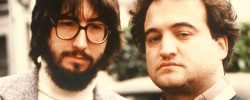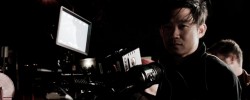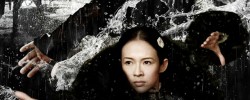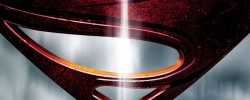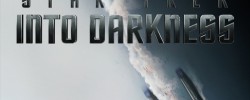
Review: The We and the I (2012) - Opens in Toronto May 17th
Cast: Michael Brodie, Teresa Lynn, Raymond Delgado
Director: Michel Gondry
Country: UK | USA | France
Genre: Drama
Official Trailer: Here
Editor’s Notes: The We And The I opens at TIFF Bell Lightbox Friday May 17th. For more information on The We And The I as well as additional TIFF releases visit TIFF.net and follow TIFF on Twitter @TIFF_NET.
Being as it is in essence a road movie, traditionally a quintessentially American genre, it’s interesting to have The We and the I helmed by a Frenchman. But then Michel Gondry is no stranger to American genre filmmaking, his attempts at romantic comedy and superhero movies—though decidedly disparate in the levels of their success—attesting both his formal versatility and acute outsider perspective on American issues. With this new film, set on a bus as it inches slowly closer to the homes of its thirty-something classmates through the Brooklyn traffic on the last day of school, he offers us a view of American youth culture few natives could manage to muster.
It’s for this marked authenticity that the film succeeds so wildly; permeated as it is with the typical tropes of such a story—the distinct, stereotypical cliques; the debauchery-drenched parties; the love triangles and squares and dodecahedrons—the film evokes the actuality of young life, paring back these very archetypes to reveal the genuine personalities beneath.
 Workshopped over a three year period with the attendees of an actual inner-city high school, it’s no surprise that The We and the I should ring so true, its characters less the creation of Gondry and co-writers Jeffrey Grimshaw and Paul Proch than they are authentic realisations of the personalities and relationships of this cast. In each of these characters—named, in almost every case, after the actor who plays them—there lingers the reality of youth, their every merit and failing carved of essential truths. It’s for this marked authenticity that the film succeeds so wildly; permeated as it is with the typical tropes of such a story—the distinct, stereotypical cliques; the debauchery-drenched parties; the love triangles and squares and dodecahedrons—the film evokes the actuality of young life, paring back these very archetypes to reveal the genuine personalities beneath.
Workshopped over a three year period with the attendees of an actual inner-city high school, it’s no surprise that The We and the I should ring so true, its characters less the creation of Gondry and co-writers Jeffrey Grimshaw and Paul Proch than they are authentic realisations of the personalities and relationships of this cast. In each of these characters—named, in almost every case, after the actor who plays them—there lingers the reality of youth, their every merit and failing carved of essential truths. It’s for this marked authenticity that the film succeeds so wildly; permeated as it is with the typical tropes of such a story—the distinct, stereotypical cliques; the debauchery-drenched parties; the love triangles and squares and dodecahedrons—the film evokes the actuality of young life, paring back these very archetypes to reveal the genuine personalities beneath.
Such is the basic dichotomy to which the title so explicitly refers: identity, the film is keen to suggest, is forged of the tension between the desire to belong to a group and the necessity to exist as an individual. Seemingly simplistic in structure, Gondry’s conceit of gradually narrowing the pool as students arrive at their destination and exit the bus is far more than just an accurate observance of the function of public transport: he steadily and shrewdly shrinks his sample size, reducing the core factions which constitute this student body to the bare humans within. Those characters we are eventually left with, as the bus and film both approach their final stop, are the truest indications of the emotional entities underlying these greater social constructs, the true personalities tucked beneath the convenient shields of conformity.
Seemingly simplistic in structure, Gondry’s conceit of gradually narrowing the pool as students arrive at their destination and exit the bus is far more than just an accurate observance of the function of public transport: he steadily and shrewdly shrinks his sample size, reducing the core factions which constitute this student body to the bare humans within.
 Its calculated reduction of such social structures to the bare truth of individuals is The We and the I’s greatest facet, and end enough to justify some of its more conspicuous means. Entrenched in this realist representation of contemporary youth, Gondry finds humour in the various interactions he captures, though not always advisedly. The group with which the film primarily concerns itself is identified throughout as “the bullies”; motivated less by mean-spirited intent than crass juvenile humour, they are less worthy of that label than many cinematic counterparts, yet still there is a certain unease to Gondry’s celebration of their mischief. He engages his audience more—at least in advance of the film’s final act—when observing the peripheries, paying attention to those characters who contribute brief but invaluable glimpses of the modern teen. Take Brandon and Luis, for instance, the squabbling gay couple who share between them perhaps five minutes of screen time, yet make with each of those an interminably engrossing romantic drama.
Its calculated reduction of such social structures to the bare truth of individuals is The We and the I’s greatest facet, and end enough to justify some of its more conspicuous means. Entrenched in this realist representation of contemporary youth, Gondry finds humour in the various interactions he captures, though not always advisedly. The group with which the film primarily concerns itself is identified throughout as “the bullies”; motivated less by mean-spirited intent than crass juvenile humour, they are less worthy of that label than many cinematic counterparts, yet still there is a certain unease to Gondry’s celebration of their mischief. He engages his audience more—at least in advance of the film’s final act—when observing the peripheries, paying attention to those characters who contribute brief but invaluable glimpses of the modern teen. Take Brandon and Luis, for instance, the squabbling gay couple who share between them perhaps five minutes of screen time, yet make with each of those an interminably engrossing romantic drama.
Attuned to the peculiarities of his trademark visual playfulness though they might be, Gondry’s occasional flights of fancy—among them a stop-motion immolation—rock the boat of realism to which he entrusts this story, each tangential vignette a trifling distraction that does more damage to the pacing than it does benefit to the characters. The director’s seeming need to fleetingly escape the cramped quarters of this bus finds more fitting expression in brief excerpts from viral videos, his nod toward the boundless social arena of the internet a knowing admission that this bus—and with it this film—is an effort to encapsulate something which cannot be contained. As the weak contrivances of The We and the I’s final moments seem almost deliberately to admit, in confirmation of the overall thesis the film postulates, youth cannot be so simply summated: Gondry is smart enough to recognise the limitations of his form; his film aims not to explain away the complexity of adolescence, but perhaps only to remind us that it does exist.
Related Posts
![]()
Ronan Doyle
![]()
Latest posts by Ronan Doyle (see all)
-
http://www.facebook.com/people/Chris-D-Misch/28134555 Chris D. Misch
-
Ronan
-
acharlie
-
Ronan




















